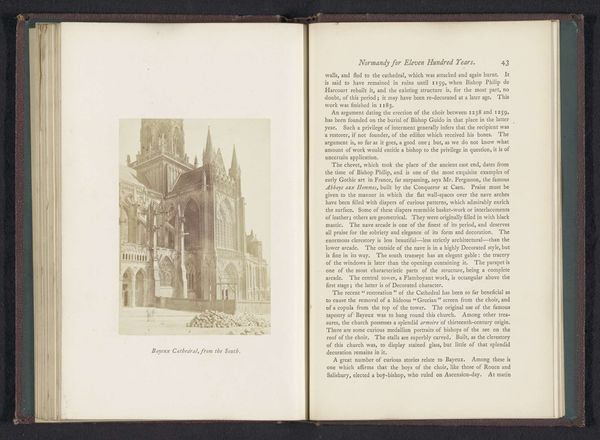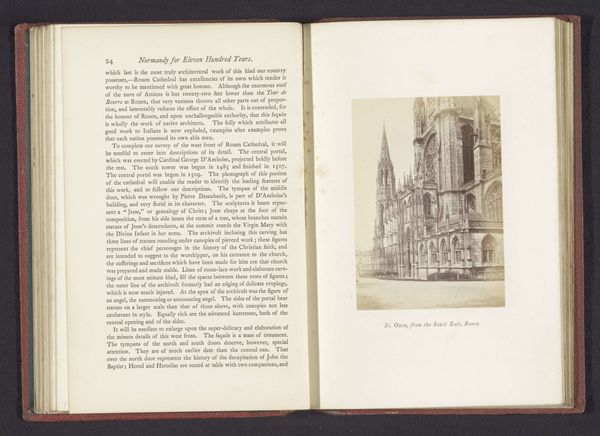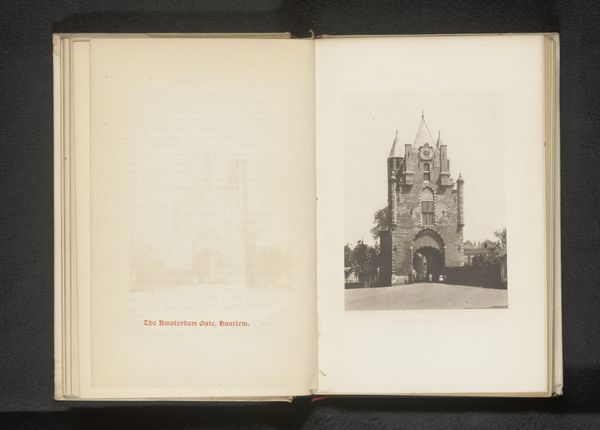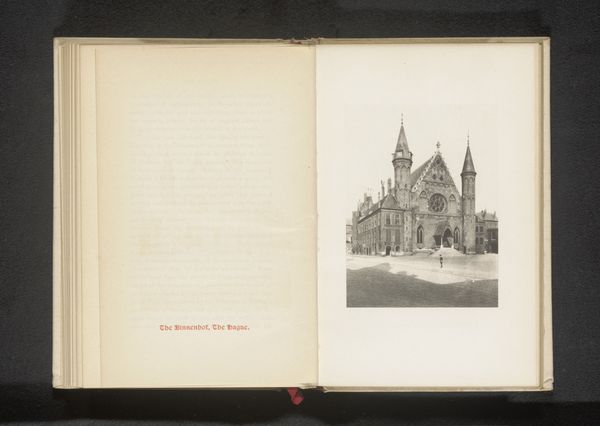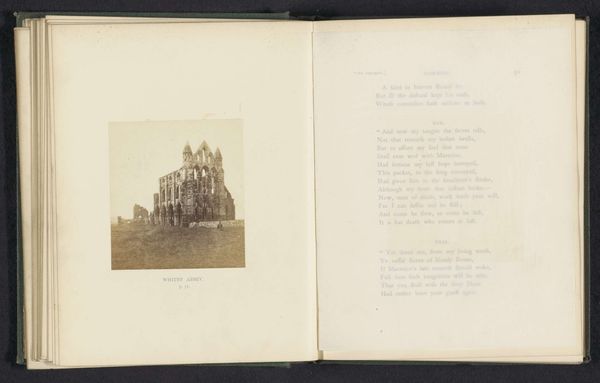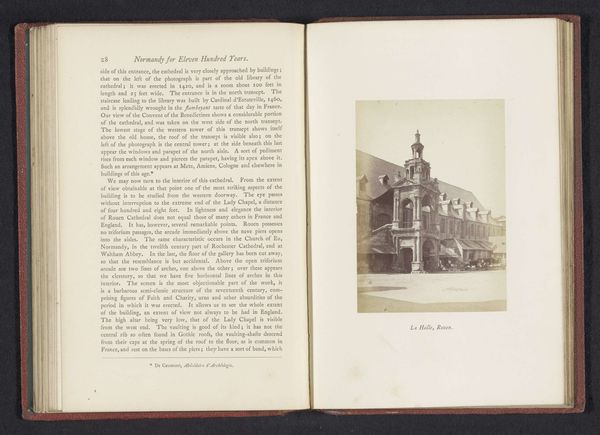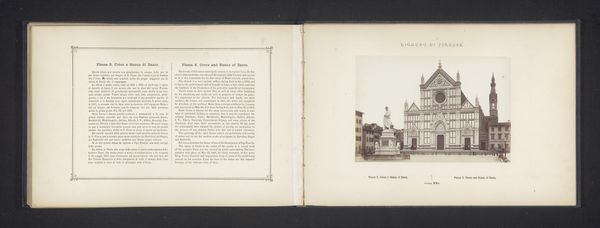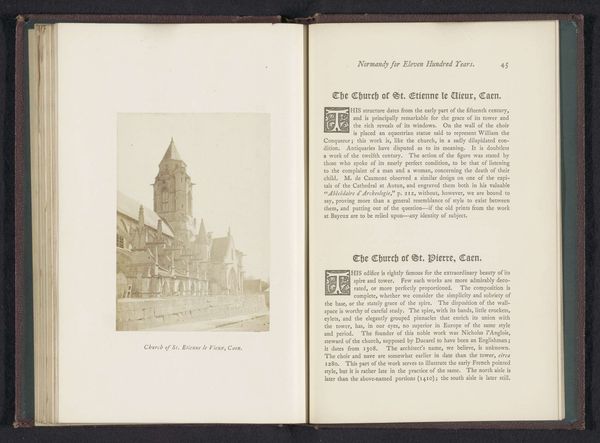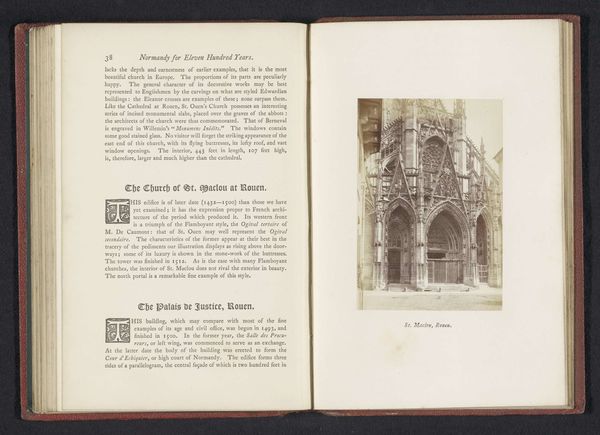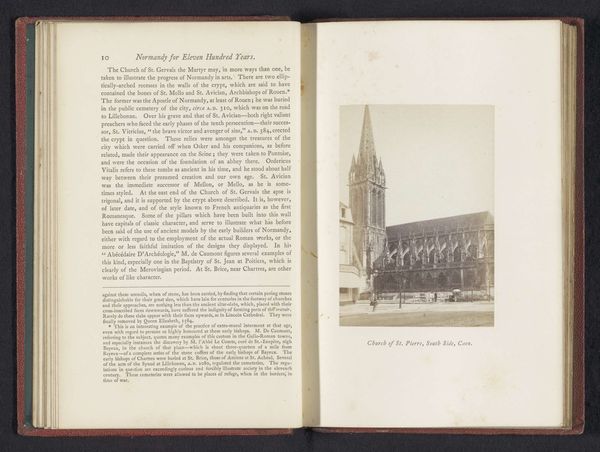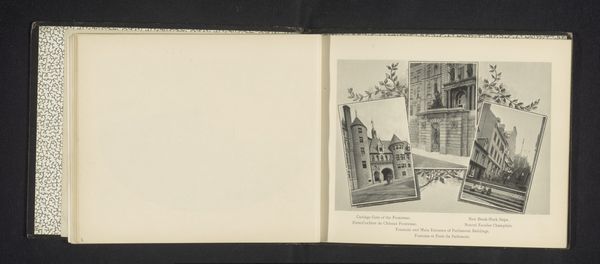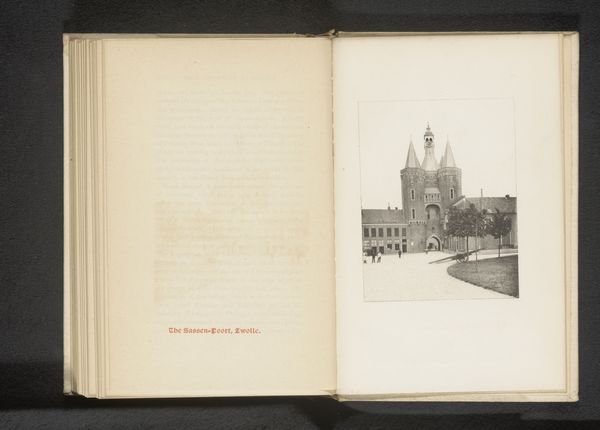
#
script typeface
#
aged paper
#
typeface
#
journal
#
fading type
#
thick font
#
handwritten font
#
thin font
#
historical font
#
small font
Dimensions: height 127 mm, width 81 mm
Copyright: Rijks Museum: Open Domain
Editor: This is a photograph titled "Gezicht op de kerk van Sint-Lucas in Karlovy Vary" taken before 1891 by Carl Pietzner. It’s striking how the image of the church is presented as part of a book, almost like a travelogue. It gives me a nostalgic feeling, like looking into a past era. How does the historical context influence your interpretation? Curator: That's a great observation about the book format. The presentation is really interesting because it speaks volumes about how imagery of architecture and places was disseminated and consumed at the time. Before mass media and digital photography, books like this served as a vital visual archive and a form of popular tourism. How does it change our perception to see it documented this way, versus a postcard, say, or a painting? Editor: It emphasizes its function as a preserved record rather than just a pretty picture, I think. Was there a specific market for these types of books? Curator: Absolutely. Consider the rising middle class in the late 19th century, their growing access to travel, and their desire for cultural knowledge. This book becomes both a souvenir and a signifier of their elevated status. The English Church, presented here, caters specifically to the English-speaking visitors in Karlovy Vary. What does the architecture of the church itself suggest about the intended audience, its taste, or the colonial powers that be? Editor: I see a very classic, Western European gothic design, perhaps something meant to make visitors feel more at home, a connection to their own cultural roots despite being geographically distant. Curator: Precisely. It becomes a staging ground for projecting power and influence abroad, doesn't it? So next time, beyond what the art *is*, consider what role is it playing. Editor: It’s fascinating to think about this image as a marker of cultural identity and social status, and a reflection on the intersection of travel, power, and representation during that time. Thanks!
Comments
No comments
Be the first to comment and join the conversation on the ultimate creative platform.
